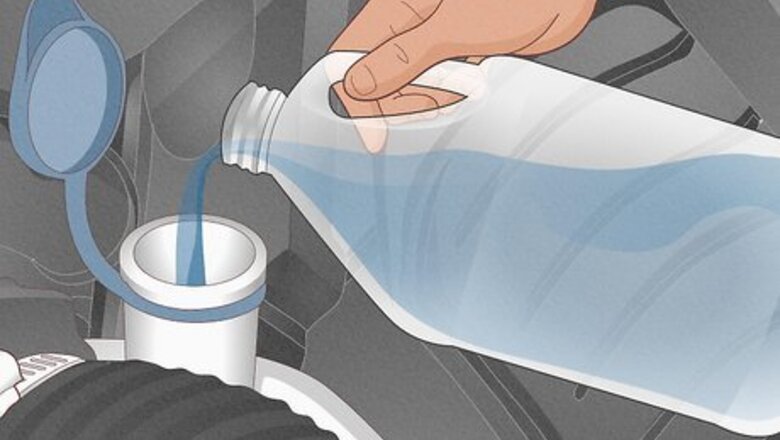
views
Resolving Common Causes of Squeaking
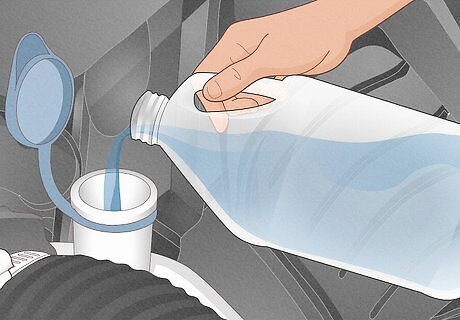
Refill your windshield wiper fluid. Many wipers skip and squeak because the windshield isn't quite wet enough to glide across. Check your fluid level and top it off if it’s low. This way, your sprayers will be ready to blast out squeak-busting wiper fluid should the problem occur. The simplest way to tell if your wiper fluid is running low is to give your sprayers a test. Hit your wiper fluid button—if little or no fluid sprays out, time to fill ‘er up!
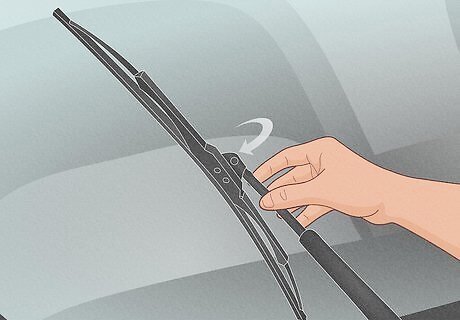
Adjust the position of the wiper blades when necessary. Windshield wipers are designed to follow the motion of the wiper arm. If your blades are stiff and aren’t trailing behind the arm in a back-and-forth motion, twist the arm with your hands to loosen the stiffness. Blades that are too tight won’t be able to alternate back and forth to trail behind the wiper arm smoothly, which causes chattering and squeaking. Wiper blades should never appear to "dig" into the windshield or remain vertical as they sweep across the windshield.

Soften your windshield wipers. Stiff wiper blades can also cause chattering and squeaking. Some blades may be stiff fresh from the box, while others may become stiffened through exposure to the elements, making them appear dry and brittle. Replace year-old blades, or soften newer blades with the following solutions: ArmorAll: With an ArmorAll wipe, rub the blade’s rubber using small, circular motions to soften it up. Rubbing alcohol: Dampen a paper towel with rubbing alcohol. Gently buff the rubber of the blade with the rubbing alcohol-dampened towel. WD-40: Use this technique sparingly, as too much WD-40 can dry out rubber. Spray a little WD-40 on a paper towel, lightly apply it to the blade's rubber, then wipe it dry.
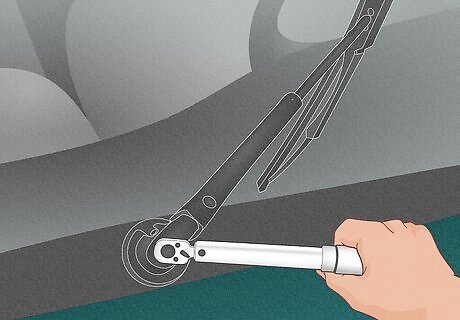
Adjust the tightness of the fasteners. Check if your blades or the wiper assemblies under them are too loose or too tight. Too little or too much tension between the glass and the wiper can result in the annoying chattering or squeaking we’re looking to avoid. Tighten fasteners with a wrench by turning them clockwise or loosen them by turning them counterclockwise. You may need to experiment with the tightness to find what works best. Ideally, the blades should be firmly in place but loose enough to sweep back and forth across the windshield.
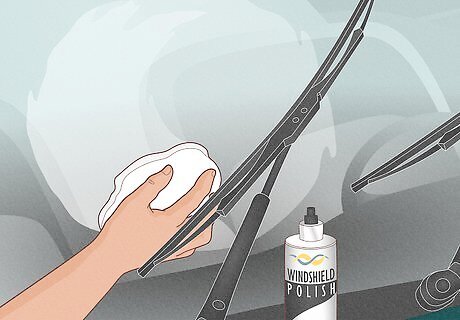
Remove friction-increasing films with windshield polish. Common automotive surface protectants, like Rain-X or certain kinds of wax, can cause chattering or squeaking. Remove the product and eliminate obnoxious wiper noises by using a microfiber cloth to buff a small amount of the polish across the entirety of the windshield. The film left behind by certain automotive surface products can increase the friction between the wiper blades and the windshield, creating unpleasant noises like squeaking.
Cleaning the Windshield and Blades
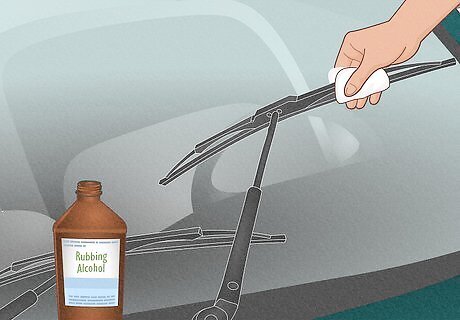
Remove buildup from your wiper blades. First, lift the wiper blade so it is oriented away from the windshield. Then, wet a paper towel with a small amount of hot, soapy water or rubbing alcohol. Wipe the blades with the paper towel(s) until it comes away clean. Check if your wipers are dirty by running your finger along the blade—if it comes up dusty or blackened, it’s time to give them a clean. Remember to clean the arm and hinged parts as well. Hinged parts of the wiper assembly can stiffen with dirt and grime, contributing to squeakiness. You may need several paper towels for extremely dirty wipers. If your paper towel is flimsy, double it before wiping, or use a microfiber cloth. If your wiper blades don't stay in position when pulled away from the windshield, hold the blade away from the glass with your free hand and clean them one at a time.

Clean the windshield glass thoroughly with glass cleaner. Coat your windshield with a generous amount of ammonia-free glass cleaner. Then, wipe a microfiber cloth across the glass using top-to-bottom motions until your windshield is spotless and shiny. Determine if your windshield is dirty by looking through it to note if your vision is impaired, or run a clean paper towel outside the glass. If it comes back coated in grime, the squeaking may be caused by built-up dirt on the windshield. Try filling a spray bottle with undiluted white vinegar and use it as you would glass cleaner. Avoid getting vinegar on painted areas of your car, as it might break down your paint. Be sure to only use ammonia-free glass cleaners, as ammonia-based cleaners can damage tinting and cause the plastic around your windshield to degrade.
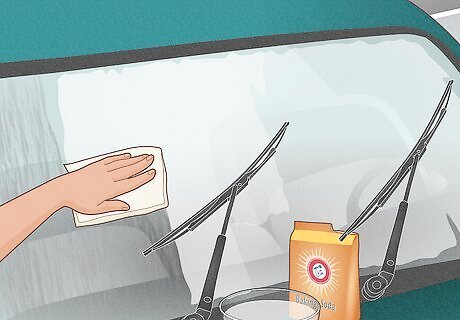
Clean a dirty windshield with baking soda. Sprinkle a generous amount of baking soda on a water-dampened paper towel for easy application. Then wipe your windshield with the solution using top-to-bottom motions until the glass is visibly clean. If your windshield is extra dirty (built-up bird poop, sap, pollen), baking soda is the perfect heavy-duty solution for a spotless clean. Replace paper towels sprinkled with baking soda as necessary. You’re likely to go through multiple before finishing your windshield.

Remedy squeaking on the go with alcohol wipes. If squeaking starts when you’re on the road, you won’t have the luxury of having household supplies on hand. Instead, keep some alcohol wipes in your car. When squeaking occurs, pull over somewhere safe and wipe the rubber of both blades until they're clean with your handy dandy alcohol wipes.
Replacing Wiper Parts
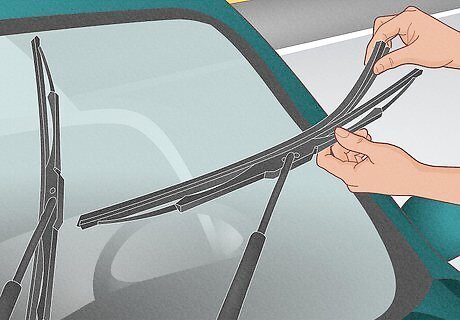
Install new rubber inserts. If the non-rubber blade and arm parts are still in good condition, you won’t need to replace them. But sometimes, the rubber breaks down faster than non-rubber parts (especially in sunny areas), leaving them cracked and falling apart. Remove and replace the rubber blade inserts to stop squeaking in its tracks. Consult your owner's manual to determine what size inserts you need.
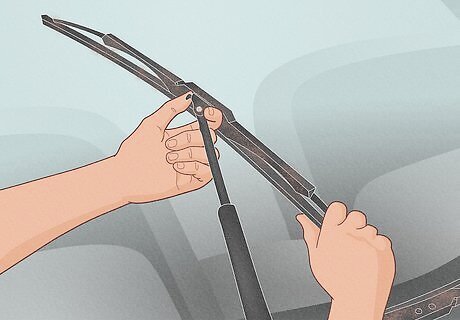
Replace your wiper blades regularly. Pull the metal arm away from the windshield. Where the blade attaches to the arm, there will be a joint. On this, you’ll find a release for the arm. Open the release, take out the old blade, insert your new blade, and reset the release. On some cars, a push-tab or tension hook may attach the blades to the arm assembly. Release these kinds of fasteners with your hands and slide off the blade. If you haven't changed your wiper blades in the past year, they may cause your squeaking. A good rule of thumb is to replace them before the rainy season or every 6 months.
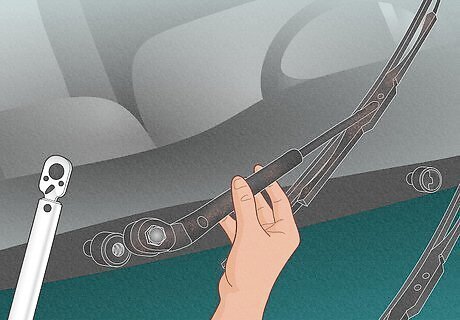
Replace the wiper assembly. Follow the wiper blade down the arm to its base. You’ll see a nut sticking up from this point. Remove the nut with a wrench and pull the arm off. Fit a replacement arm into place and fasten the nut. Now, your new assembly is good to go! With time and continued use, the assemblies holding your wiper blades in place can become misshapen or inflexible, contributing to squeaking. A warped wiper assembly is a tell-tale sign that it needs replacing.




















Comments
0 comment